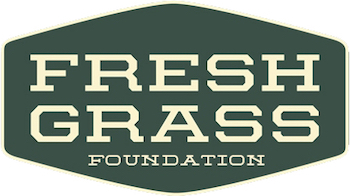Women’s History Month: Spotlight on Bessie Jones

Mary Elizabeth “Bessie” Jones was born on February 8, 1902, in Smithville, Georgia, though she and her family moved to Dawson, Georgia, just a few months later. Jones grew up in a rich musical environment: her mother played autoharp, and her uncles played guitar, banjo, and accordion. A masterful storyteller, her grandfather told her stories about his being a slave and taught her the field songs he had sung. Eventually, Jones taught children in her community about slavery in songs and preserved the games, dances, and singing plays of slaves.
Jones married Cassius Davis when she was just twelve, and their daughter, Rosalie, was born soon after. The couple visited Davis’ family on St. Simon’s Island, off Georgia’s coast, near Brunswick. Davis died in 1926, and Jones and her cousin moved to Florida. Jones met her second husband, George Jones, and the two became seasonal migrant workers, but they visited Brunswick and St. Simon’s often. By 1933, the two settled down on St. Simon’s, and Jones joined folklorist’s Lydia Parish’s Spiritual Singers Society of Coastal Georgia.
By the late 1950s, she had met Alan Lomax, who was in St. Simon’s to collect and record the music of the Spiritual Singers Society. She traveled to New York City in 1961 so Lomax could record her music and her biography.
By the early ‘60s, Jones felt she was called to teach, as she recalls in her autobiography: “The Lord blessed me not to forget these things and keep them up among people who weren’t studying it. White people know our backgrounds, but they’re going to try to hold it back and keep us back as long as they possibly can.” She was a member of the Georgia Sea Island Singers, which organized as a formal troupe in 1963 and traveled extensively, playing Carnegie Hall, Central Park, the Newport Folk Festival, and the Monterey Folk Festival.
Through the 1970s Jones continued to perform. Her first solo album, So Glad I’m Here, was released in 1973, and her second, Step It Down, followed in 1975; her solo album Put Your Hand on Your Hip and Let Your Backbone Slip was released in 2001.
Jones was recognized for her work when she was awarded a National Endowment for the Arts National Heritage Foundation Fellowship in 1982, as well as the Duke Ellington Fellowship at Yale. She died in 1984.
Above all, Jones considered herself a teacher, passing stories, games, dances, and songs of older generations to younger generations so that they would never forget their past and their heritage. Below are some of the highlights from her recording career.
###
“I’m Gonna Lay Down My Life for My Lord”
“One Morning Soon”
“This May Be the Last Time”
“Shoo Turkey”




